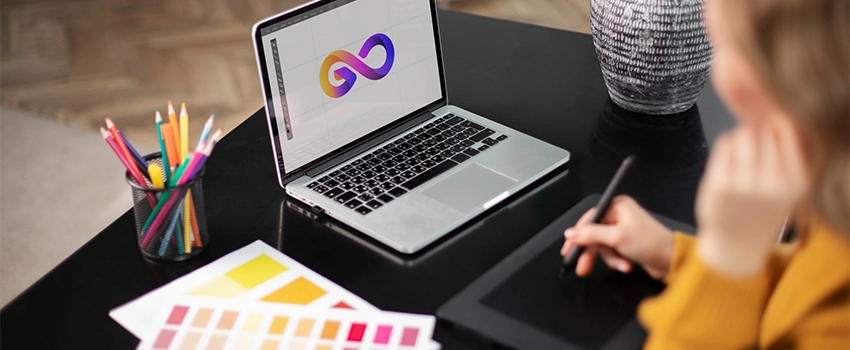The graphic design world is changing at a breakneck pace. Now with the advent of AI-driven generative design, creativity is no longer the sole province of the human imagination; it’s a partnership with one’s designing AI. This movement is opening new doors and presenting new challenges for both professionals and brands.

What is Generative Design?
Generative design is a term used to describe the process of designers incorporating algorithms, artificial intelligence, and machine learning to produce multiple design results from a set of input criteria. The designer doesn’t create each thing individually; instead, they set rules or constraints (such as a specific color scheme, a range of layout parameters, or a selection of typography options), and the system synthesizes an unlimited number of creative possibilities.
In simpler terms, generative design means software can be a partner in creation, rather than a mere tool.
How Generative Design is Transforming Graphic Design
Faster Design Processes: AI can churn through a plethora of ideas in seconds, saving hours of brainstorming and revision. Need 50 logo variations? Tools that can generate options have the potential to give designers options more quickly.
Creative Exploration at Scale: Designers are often constrained by time and human power. Generative design eliminates these limitations by enabling an unlimited number of ways to try out various formats, patterns, and arrangements. This in turn encourages more creativity and creative freedom.
Personalization Made Simple: Generative design enables mass customization. Each brand can now create hundreds of different graphics tailored to its various audiences without having to recreate them every time. Think local ads, social media content, or personalized packaging — all of it being created dynamically.
Blending Data with Design: Through the input of data, generative design can develop data-aware graphics, such as event posters that change color according to their weather information or marketing visuals that change their form in response to user action.
Reducing Repetitive Tasks: Designers can automate repetitive, time-consuming tasks such as resizing, cropping, or generating template variations, which translates to more time for strategic thinking and creativity.
Does Generative Design Replace Human Creativity?
No—it enhances it.
The point of generative design is not to replace the designer; it is there to enhance creativity. AI does the heavy lifting, while human designers concentrate on storytelling, emotional connection, and brand vision. Designers ultimately make the final decisions, ensuring the work aligns with the client’s goals and values.
Popular Generative Design Tools in 2025
- Adobe Firefly
- Canva AI
- Runway ML
- Figma AI Plugins
- DALL•E for Visual Concepts
- Midjourney for Artistic Visuals
These tools are helping creatives push boundaries while staying productive.
Challenges to Consider
Ethical Use: Who owns AI-generated designs?
Quality Control: Not all AI outputs meet brand standards.
Skill Evolution: Designers must learn to work with AI, not against it.
The Future of Graphic Design: Collaborative Creativity
As AI continues to develop, the role of the graphic designer is evolving. Designers will serve as curators, strategists, and creative directors of AI-assisted workflows. Generative design will liberate creators from the grind of work, enabling them to have the time to think big and emotional storytelling.
At MediaLabz, we believe it’s essential to adopt these tools to remain competitive in the design profession. It’s not AI vs. designer; it’s AI + designer.
